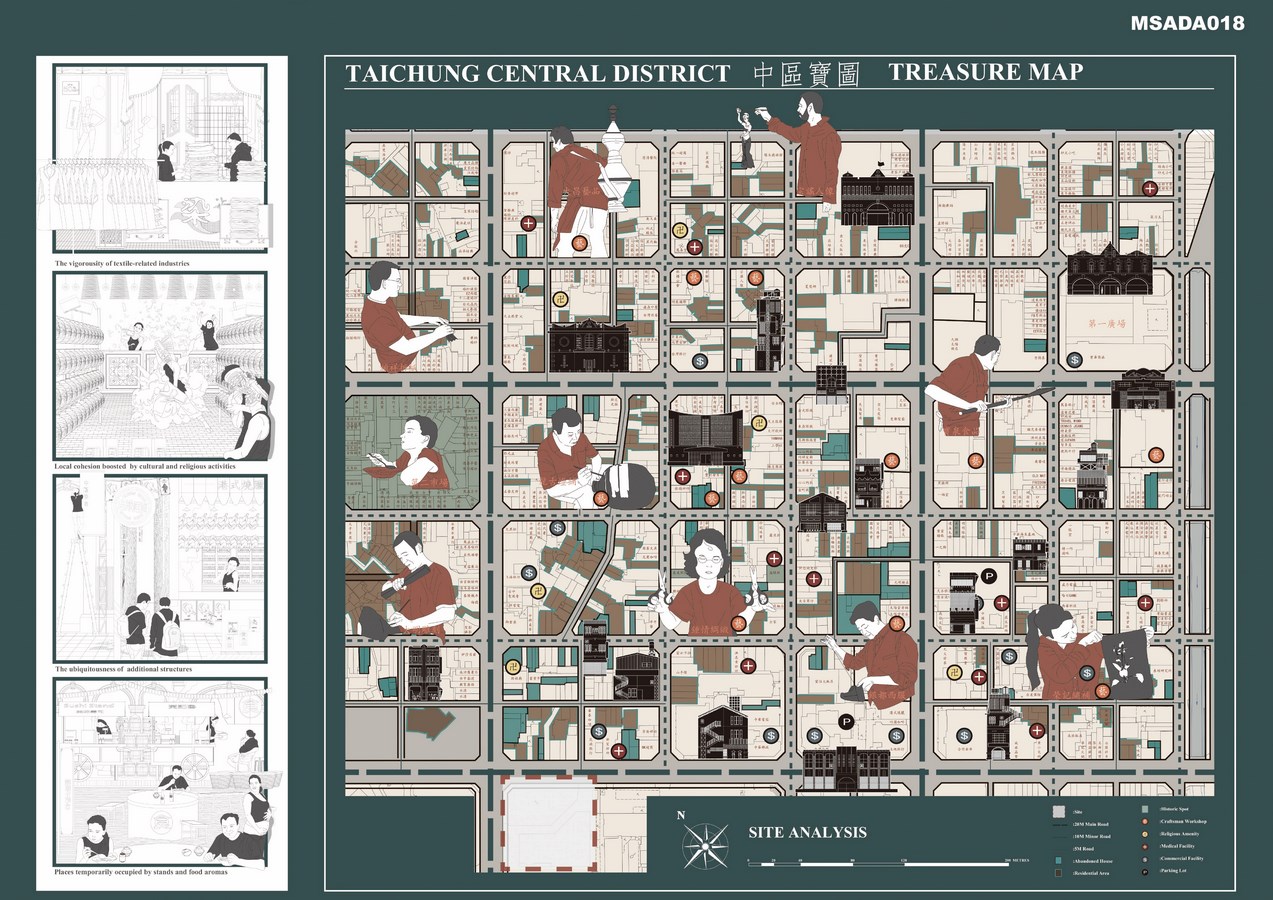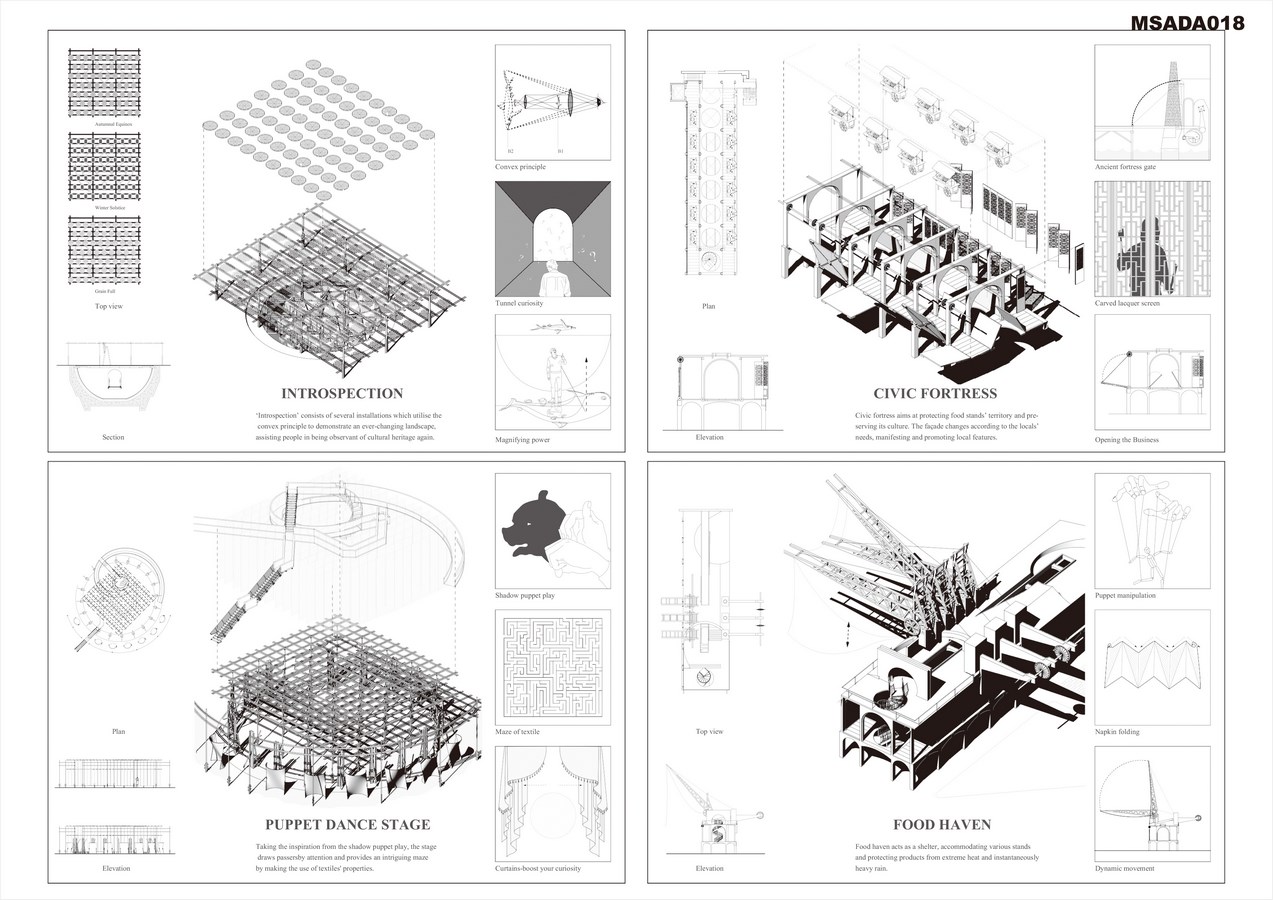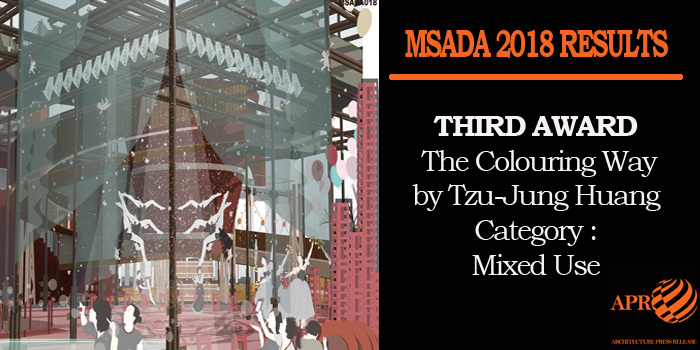Media Student Architecture & Design Award 2018
Third Award | Category: Mixed Use
Architect: Tzu-Jung Huang
Country: Taiwan
The conceptual project, entitled The Colouring Way, demonstrates a strategy, able to transform the local economy and infrastructure in the Taichung Central District, by proposing a utopian community that enables residents to work and play together harmoniously. It aims to eliminate people’s obliviousness of trivial but intriguing things in their daily life and traditional industries, re-sparking their interest in social and cultural events and regenerating this area simultaneously.

Taichung Central District, a multicultural city, used to be a prosperous city with vigorous textile industries and a considerable number of people in the 1960s. However, after the development of public services in the Taichung Western District, the Central District quickly became a lifeless place with lots of derelict houses and run-down areas, leading to the loss of its heritage and cultural traditions. The Colouring way explores an alternative dyeing factory typology with historic, cultural and symbolic icons in the city which retains the local values and beliefs. According to experiential research, it is clear that the local tourism and community cohesion are the keys to facilitating social development and stabilising local economic structures in the long run. With some dynamic iconic structures and tectonic components, the Taichung central district would be filled with nostalgic warmth of the city, developing cultural identity and drawing tourists’ attention gradually. The Colouring Way also provides people with educational and recreational amenities which can bring out everyone’s inner child and promote chance interaction. The quirky atmosphere and enticing spaces would encourage people to take part in festive activities and hunt out novelty, thereby inducing a feeling of well-being. Through such participation, people are more able to relish the attractiveness of the combination of modern and traditional matters, enhancing cultural identity development and diverse enrichment. After twenty years, residents would decorate the city with the iconic components spontaneously, inviting people to ‘The Colouring Spree festival’.

With growing concerns regarding our cultural and environmental challenges, this speculative proposal, a primary impetus, not only accelerates the regeneration of the city but also promotes local beliefs and social interaction with historical, cultural and spatial languages, articulating the relationship between people and spaces from a more spiritual and emotional scale.


